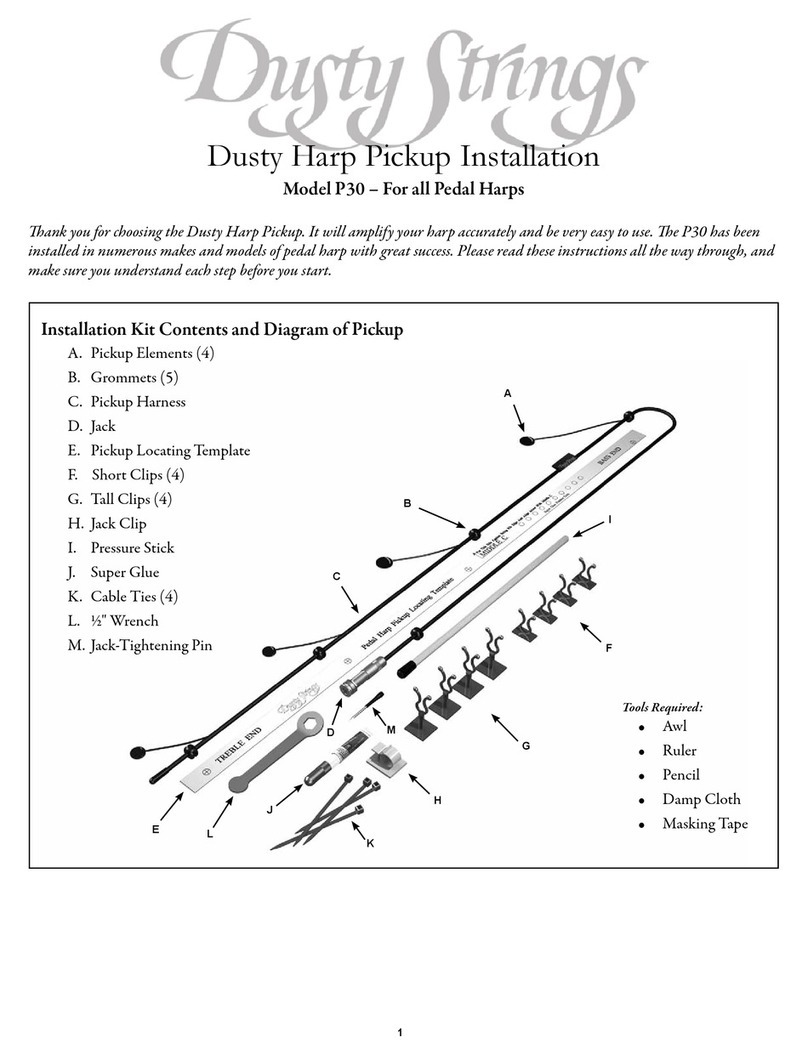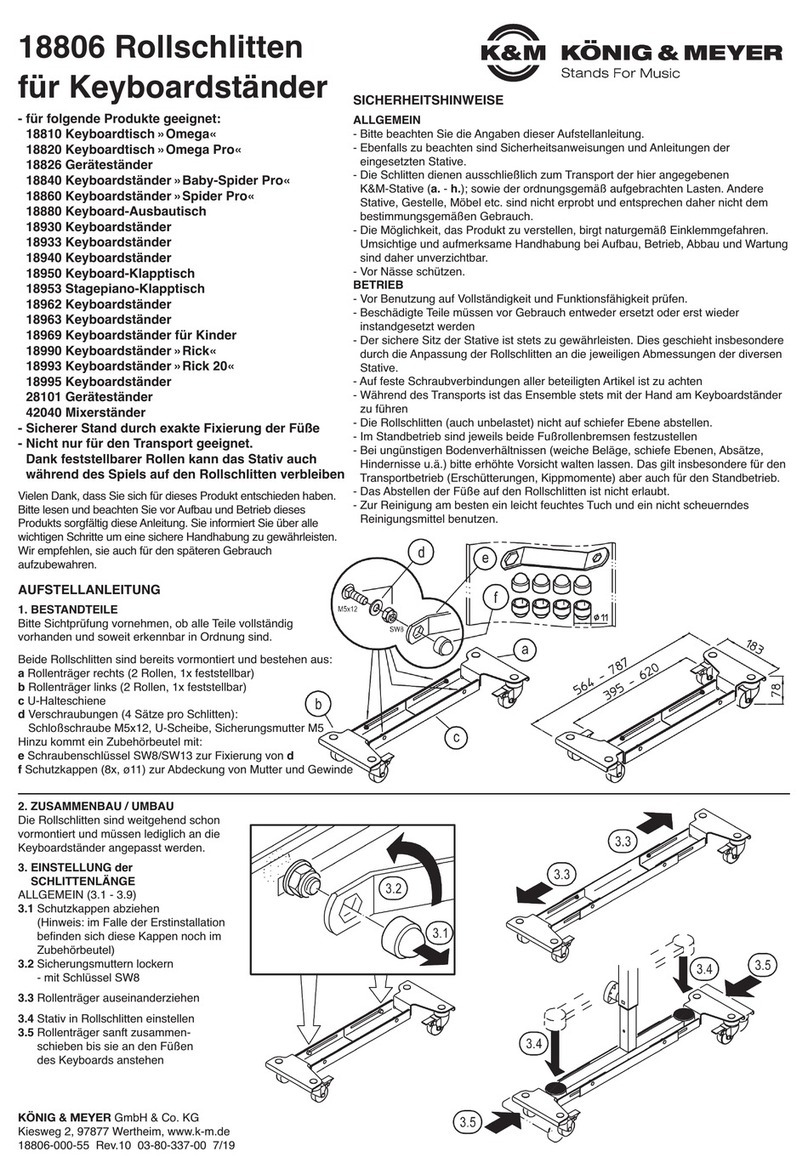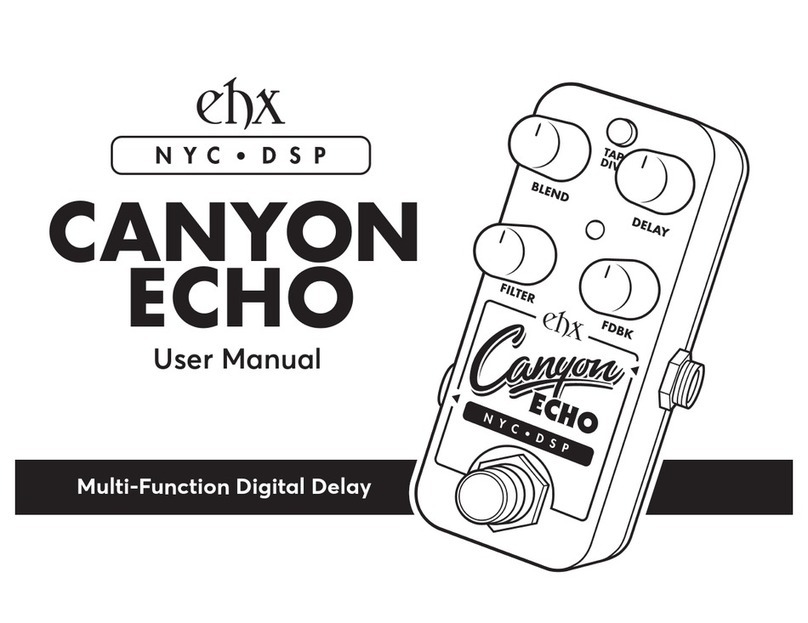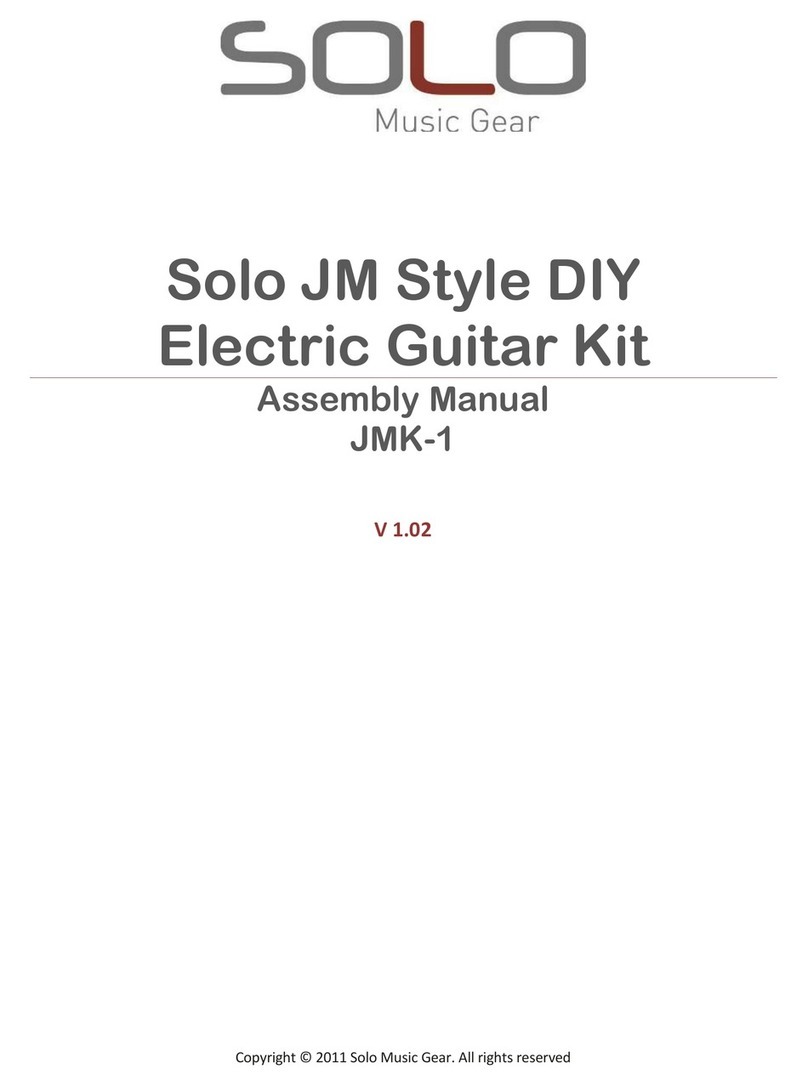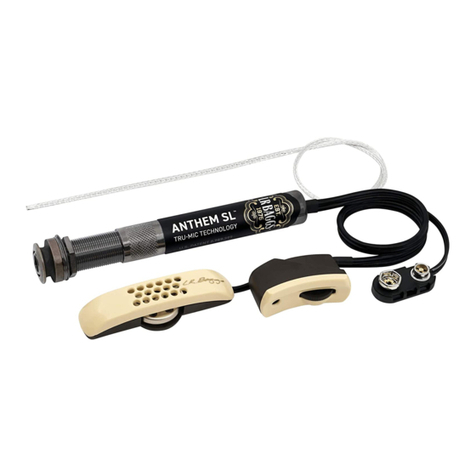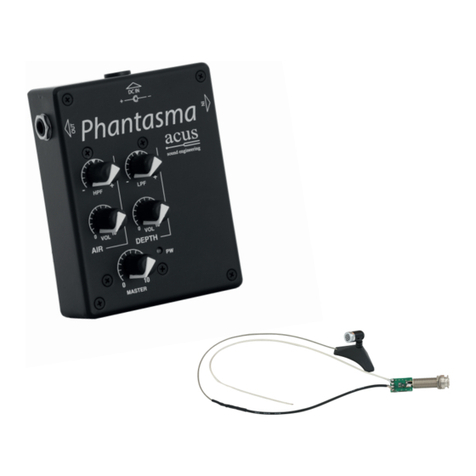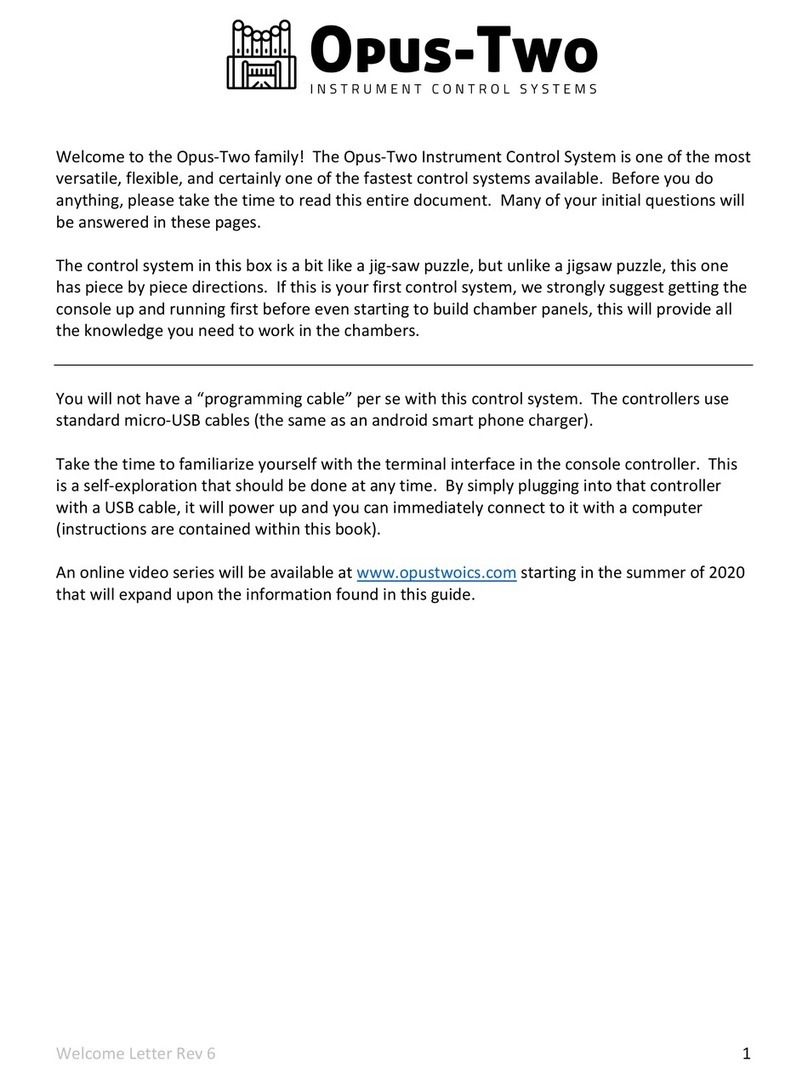Fodera Dual Action Truss Rod User manual

!
1!
Adjusting The Fodera Dual Action Truss Rod:
Standard Line
The Fodera Dual Action Truss Rod was designed to ensure that whether your gig finds you in
Alaska in January or Nassau in July, your Bass can be adjusted to play the same way it did the
day it left our shop.
We make every Fodera out of some of the longest-aged, quality instrument tonewood on the
planet. Our wood is as stable as any that you will find. However, it is still wood and changes in
temperature and humidity will cause wood to change shape and require some tweaking of your
Truss Rod to maintain your instrument’s optimal playability.
Whenever your bass experiences significant changes in temperature or humidity, you should
check the relief of your bass’ neck. A neck can be one of three things – perfectly flat, “bowed” or
“back-bowed.” Here at Fodera we generally set up our basses (unless requested to do otherwise)
with an almost flat neck (with just a very small hint of bow).
A ‘bowed” neck refers to a situation where the center of the neck drops away from the strings.
An extremely bowed neck will have very high action and require a great deal of effort to fret a
note.
A “back bowed neck” refers to the opposite condition – one where the center of the neck arches
upwards towards the strings. When this situation occurs, your bass will feel very “sloppy” to
play and you will experience fret buzz no matter how lightly the pressure used with your fretting
hand.
To properly measure the amount of relief in your neck, we recommend using a capo to hold the
strings down at the first position while holding down your lowest string (either the E string or the
B string) at the last fret. While doing this, use a feeler gauge to measure the distance between the
top of the eighth (8th) fret and the bottom of your lowest string. Use the following as a rough
guide...
•Extremely Light Touch / Extremely Low Action: 0.010”
•Medium Touch / Medium Action: 0.020”
•Heavy / Medium-High Action: 0.030”
Key Point: The Fodera Dual Action Truss Rod allows you to properly adjust the neck of your
bass in almost any climate condition, however, at certain times of year and/or in extreme weather
conditions, you may have to remove the truss rod and turn it upside down in order to adjust your
bass’ neck optimally.
The first thing you need to do is determine in which position your Fodera Dual Action Truss Rod
presently is oriented. Depending on the time of year that your bass was built, your truss rod may
be in one of two positions…

!
2!
Begin!by!locating!the!Truss!Rod!at!the!base!of!the!neck.!You!can!use!the!U<Bend!Adjustment!
Tool!at!any!time!to!adjust!the!tension!of!the!neck.!
!
! !
!
Truss%Rod%in%Normal%Position%
In this position the Truss Rod works in the same way that most typical truss rods do – turning the nut
clockwise will tighten the Truss Rod and decrease relief / bow in the neck thereby moving the strings
closer to the fingerboard. Turning the nut counter-clockwise will loosen the Truss Rod and allow the
tension of the strings to increase relief / bow in the neck and serve to move the strings further away
from the fingerboard. *Note: The neck was removed from bass in photo.
Truss Rod in Reverse Position
In this position the Truss Rod works in exactly the opposite way as a traditional Truss Rod does.
Turning the nut clockwise will again tighten the Truss Rod, but in this position, it will increase relief
/ bow in the neck and move the strings away from the fingerboard. Turning the Truss Rod Nut
counter-clockwise will loosen the Truss Rod and decrease relief / bow in the neck. *Note: The neck
was removed from bass in photo.

!
3!
Take extra care when adjusting the Truss
Rod. Do not damage the sides of the Truss
Rod Channel when making your
adjustments.
Removing and Flipping the Truss Rod
Should you need to remove and flip your Truss Rod in order to obtain optimal adjustment of
your instrument’s fingerboard, please do the following:
1. First, completely remove the strings from the bass.
2. Turn the bass around to the back of the instrument. Carefully remove the neck by
unscrewing the four bolts behind the neck pocket. Be very careful not to damage the finish
on the body of the bass.

!
4!
3. Completely loosen the nut using the U-Bend tool that came with your instrument.
4. Now thread the Truss Rod Remover onto the threaded portion at the top of the Truss Rod.
You only need to thread the tool 2-3 complete turns.
5. Pull the Truss Rod out of the channel in the neck.

!
5!
6. Whichever position the Truss Rod was in, flip it over 180 degrees before reinserting it into
your bass. In the photos that follow, a Truss Rod that had been in the Normal Position is
being flipped to the Reversed Position…
7. Once flipped, reinsert the Truss Rod…
8. Reinstall the Nut and adjust the Truss Rod so that it just begins to come under tension.

!
6!
9. Carefully reinsert the neck in the neck pocket on the body of the instrument. Turn the
instrument around and screw neck into place.
10. You can now string up your bass. Remember to tune your bass before and between
making any adjustments after reattaching the neck to the instrument…Allow the bass to
settle-in for 24 hours and then make any necessary fine-tuning adjustments.
!
Table of contents


